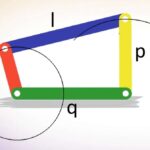
Kepler discovered three empirical laws that accurately described the motions of the planets. The three laws of Kepler may be stated as,
1. Kepler’s First Law: Each planet moves in an elliptical orbit, with the sun at one focus of the ellipse. This law is also known as the law of elliptical orbits and obviously gives the shape of the orbits of the planets round the sun.
2. Kepler’s Second Law: The radius vector, drawn from the sun to the planet, sweeps out equal areas in equal time, i.e., its areal velocity (or the area swept out by it per unit time) is constant. This is referred to as the law of areas and gives the relationship between the orbital speed of the planet and its distance from the sun.
3. Kepler’s Third Law: The square of the planet’s time period (T) is proportional to the cube of the semi-major axis (R) of its orbit. This is known as the harmonic law and gives the relationship between the size of the orbit of a planet and its time of revolution.
T2 ∝ R3


